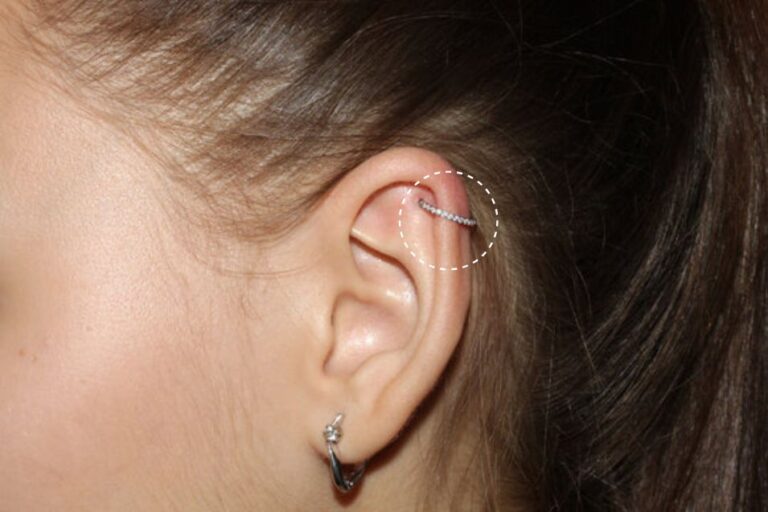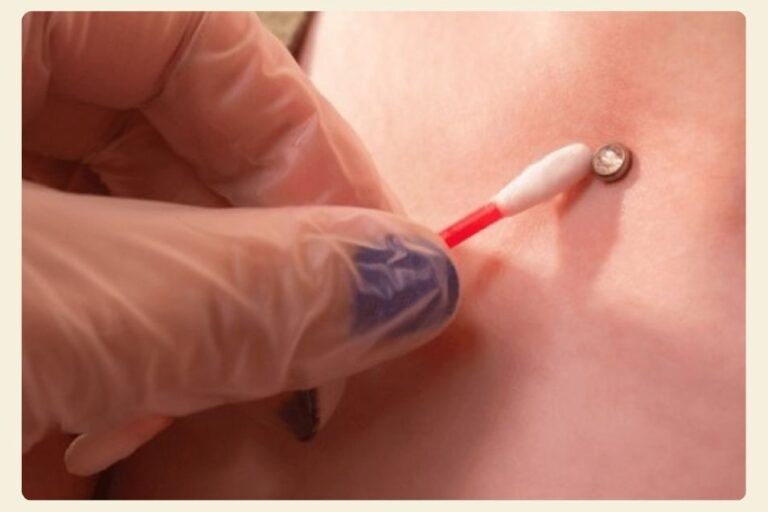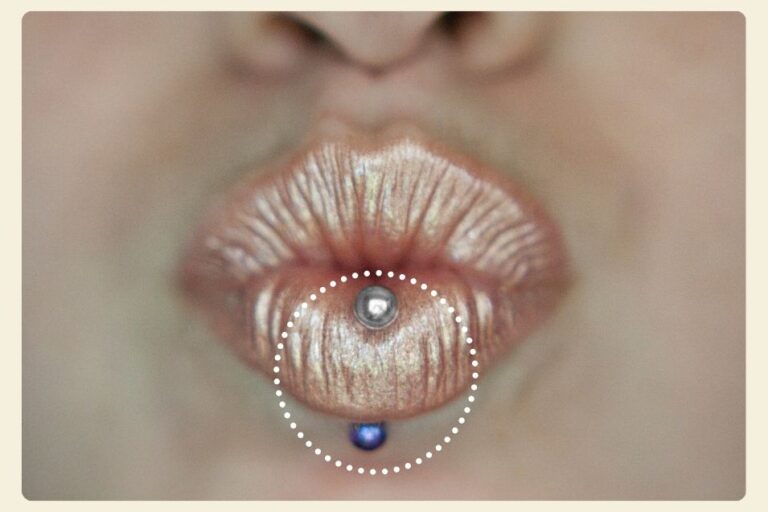The Ultimate Guide to Daith Piercing: Pain, Cost, Size, and Healing Time
Daith piercings are a popular ear piercing that goes through the inner cartilage of your ear, giving you a stylish and unique look. If you’re thinking about getting a daith piercing, it’s good to know how much it might hurt, how long it takes to heal, and what size jewelry you should choose. In this guide, we’ll explain everything clearly, so you can decide if this piercing is right for you.
What is a Daith Piercing?

A daith piercing is an ear piercing located in the innermost fold of cartilage inside your ear. It’s placed just above the opening of the ear canal, near the center, giving it a unique and stylish look. Many people choose this piercing because of its distinctive position, making it noticeable yet subtle compared to other ear piercings.
Daith piercings typically use small, curved jewelry such as captive bead rings, hoops, or clicker rings. The shape of the jewelry fits comfortably within the natural curve of the ear’s cartilage. This piercing has become increasingly popular both for fashion and because some believe it can help relieve migraines, although evidence supporting this is limited.
How Long Does a Daith Piercing Take to Heal?

A daith piercing usually takes around 4 to 12 months to heal completely. Because this piercing goes through thick cartilage, it heals more slowly than standard earlobe piercings. During the first few months, it’s important to care for the piercing properly to help the healing process.
Healing times can vary from person to person, depending on factors like your body’s ability to heal, aftercare routine, and overall health. To ensure smooth healing, always follow your piercer’s aftercare instructions and avoid touching or irritating the area unnecessarily.
Does Daith Piercing Hurt?
A daith piercing usually causes moderate pain because it passes through thick ear cartilage. On a pain scale from 1 to 10, most people rate it between 4 to 6. You might feel a sharp pinch and some pressure during the piercing itself, but this sensation is brief and typically lasts only a few seconds.
After the piercing is done, it’s normal for your ear to feel tender, sore, or swollen for a few days. Pain and discomfort usually decrease gradually. Proper care and avoiding unnecessary touching can help keep pain manageable and promote faster healing.
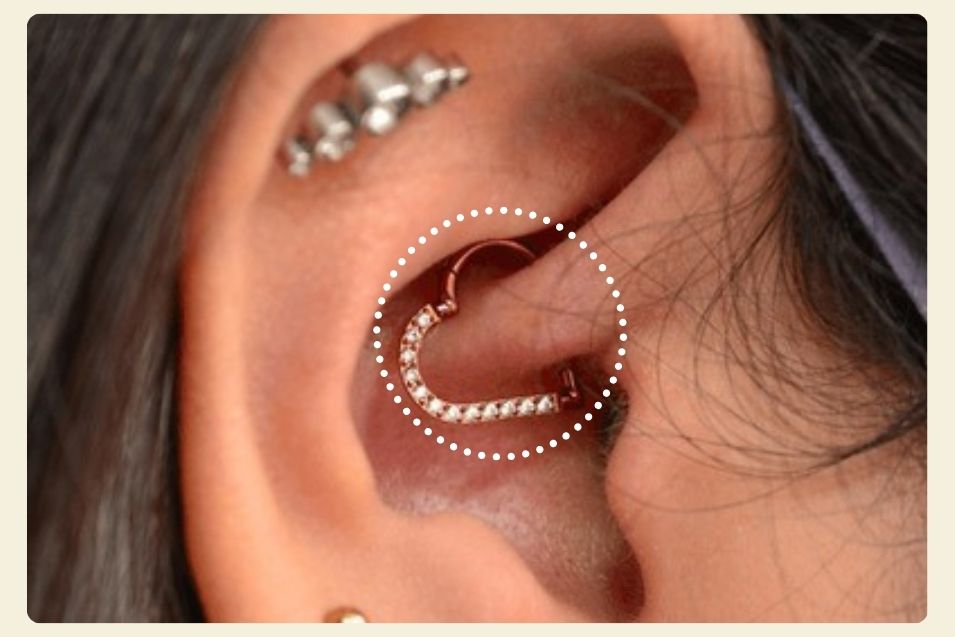
How much is a Daith Piercing?
The cost of a daith piercing typically ranges from $30 to $80, depending on where you get it done. Prices can vary based on the piercer’s experience, the type of jewelry you choose, and your location. High-quality jewelry, such as surgical steel, titanium, or gold, can make the piercing more expensive.
It’s important to choose a reputable piercer, even if it means paying a little extra. Cheaper options might not always follow proper hygiene practices or use quality materials, which can lead to complications. Always confirm the total price, including jewelry, before getting your daith piercing.
What Gauge is a Daith Piercing?

Daith piercings are usually done with jewelry that has a gauge (thickness) of 16 or 18. The most common gauge used by professional piercers is 16 gauge, which measures about 1.2 millimeters thick. Occasionally, piercers might use an 18 gauge (about 1 millimeter thick), especially for people who prefer thinner jewelry.
The diameter of the jewelry (such as rings or hoops) typically ranges from 8 to 10 millimeters, depending on your ear shape and personal preference. Your piercer will suggest the best size based on your ear’s anatomy, ensuring comfort and proper healing. Always follow your piercer’s recommendation to get the perfect fit.
Daith Piercing Size Chart
| Gauge (Thickness) | Gauge (mm) | Diameter Size (mm) | Diameter Size (Inches) | Jewelry Types | Recommended For |
| 16 gauge | 1.2 mm | 8 mm | 5/16″ | Hoops, captive bead rings, clickers | Small or tight-fitting daith piercings |
| 16 gauge | 1.2 mm | 10 mm | 3/8″ | Hoops, captive bead rings, clickers | Standard size; fits most people comfortably |
| 16 gauge | 1.2 mm | 12 mm | 1/2″ | Hoops, captive bead rings, clickers | Larger ears or looser-fitting jewelry preference |
| 18 gauge | 1.0 mm | 8 mm | 5/16″ | Thin hoops, seamless rings, clickers | Smaller ears or preference for delicate jewelry |
| 18 gauge | 1.0 mm | 10 mm | 3/8″ | Thin hoops, seamless rings, clickers | Standard fit with thinner jewelry |
When Can I Change My Daith Piercing?
You should wait until your daith piercing has fully healed before changing the jewelry. Typically, healing takes about 4 to 12 months. Changing the jewelry too soon can irritate the piercing and prolong the healing time, increasing the risk of infection or complications.
Before changing the jewelry, ensure there’s no swelling, tenderness, or discharge. If you’re unsure whether your piercing has healed completely, consult your piercer. They can safely help you change your jewelry and advise you on appropriate options to avoid irritation or injury.
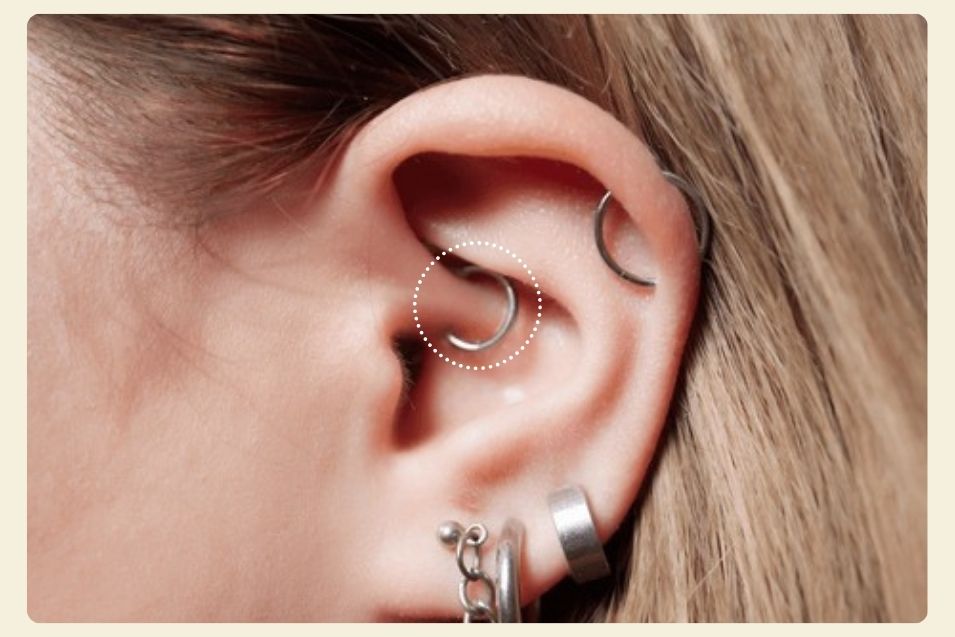
How to Remove Daith Piercing?
To remove a daith piercing, wash your hands thoroughly to prevent infection. Next, hold your ear gently with one hand and use the other to carefully open the jewelry. If your jewelry is a hoop with a small ball (captive bead ring), gently release the ball by slightly pulling the ends apart. For clicker rings, find the hinge and carefully open it by pressing or lifting at the hinge.
Once the jewelry is open, slowly slide it out of your piercing. Be gentle to avoid causing pain or irritation. If you’re having trouble removing the jewelry yourself, it’s best to visit a professional piercer who can safely help you remove or replace it.
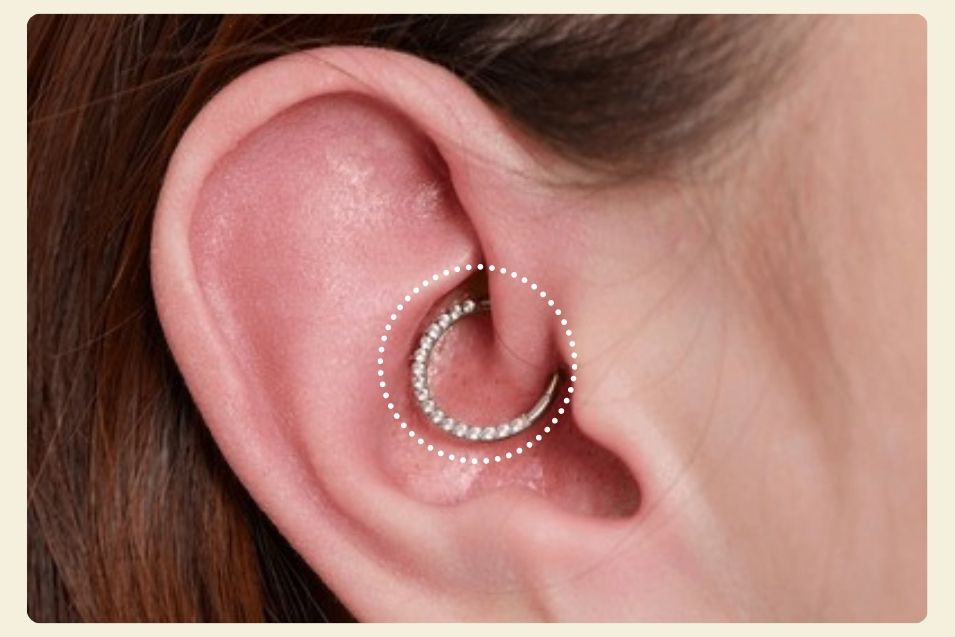
How to Clean a Daith Piercing?
To clean a daith piercing, start by washing your hands carefully with soap and water. Then, soak a cotton swab or gauze pad in a saline solution (saltwater solution) or piercing aftercare spray. Gently clean around the pierced area, carefully wiping away any crust or discharge. Avoid twisting or turning the jewelry during cleaning to prevent irritation.
Repeat this cleaning process twice daily, typically in the morning and at night. It’s important not to use harsh substances like alcohol, hydrogen peroxide, or ointments because these can delay healing. Consistent and gentle care helps your piercing heal properly and reduces the chance of infection.
Frequently Asked Questions about Daith Piercings
Some people believe a daith piercing helps relieve migraines because it targets a pressure point related to acupuncture. However, scientific research has not conclusively supported these claims. Results vary, so it’s important not to rely solely on a daith piercing for migraine relief.
Wearing earbuds with a daith piercing is possible, but it might feel uncomfortable initially, especially during the healing stage. Using over-ear headphones is generally more comfortable while the piercing heals. Once healed, most people comfortably wear earbuds without issues.
To remove a daith piercing hoop, wash your hands first, then gently hold your ear and carefully separate the ends of the hoop or open the hinged section. Slowly slide the jewelry out of your ear, avoiding any pulling or twisting. If you have difficulty, seek help from a professional piercer.
Some people claim a daith piercing can reduce anxiety by stimulating certain acupuncture points inside the ear. However, there’s no scientific evidence proving it effectively treats anxiety. If you’re considering a daith piercing for anxiety relief, consult a healthcare provider first.
Avoid sleeping directly on a daith piercing during the initial healing period because pressure can cause pain, irritation, or delay healing. Try sleeping on your opposite side or use a travel pillow to avoid direct contact with the piercing. Once healed, sleeping normally should not cause problems.
To treat a bump on your daith piercing, regularly clean the area with saline solution twice daily and avoid touching or irritating the bump. Applying warm saline compresses can help reduce swelling and promote healing. If the bump persists or worsens, consult a professional piercer or healthcare provider.


